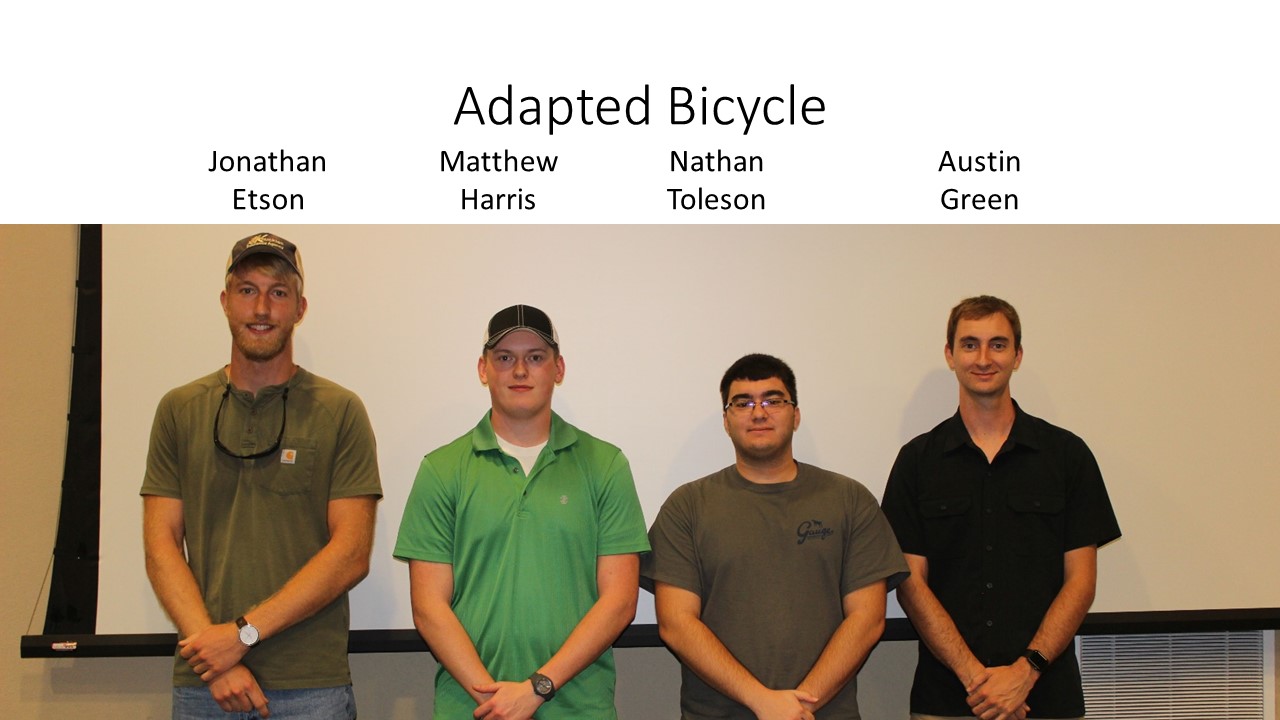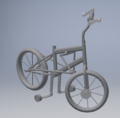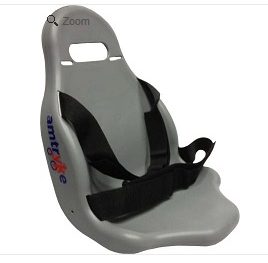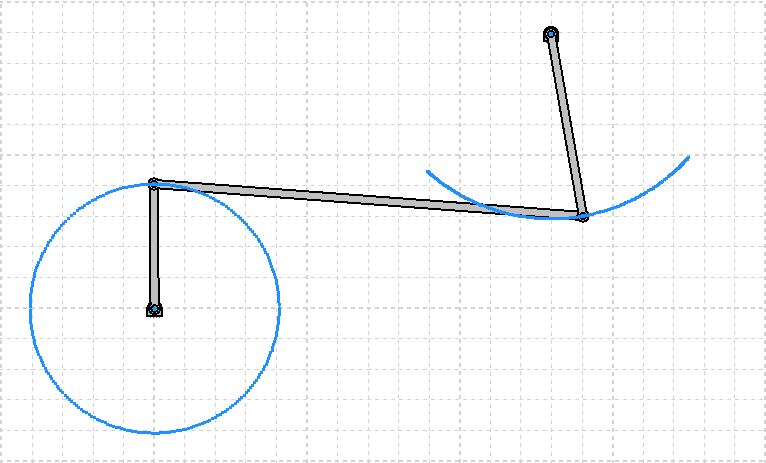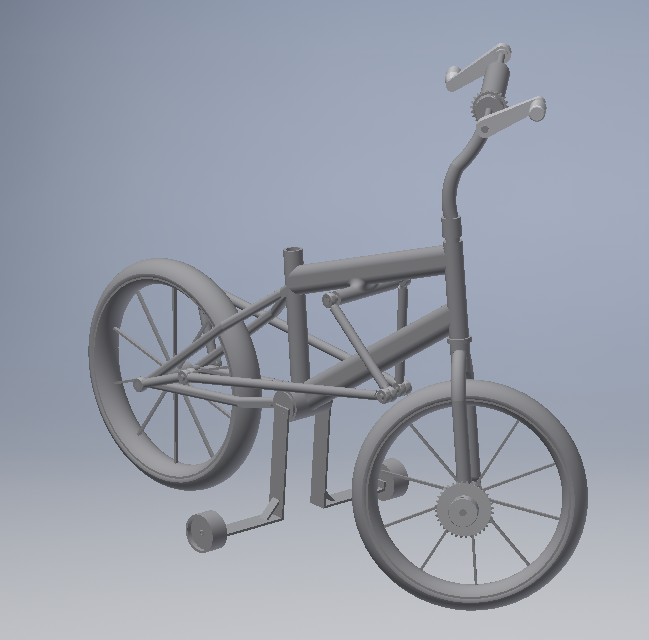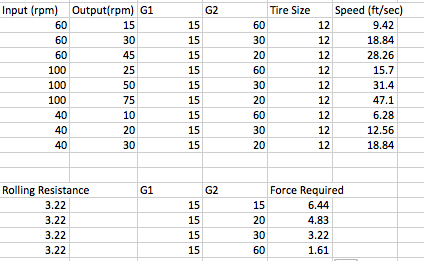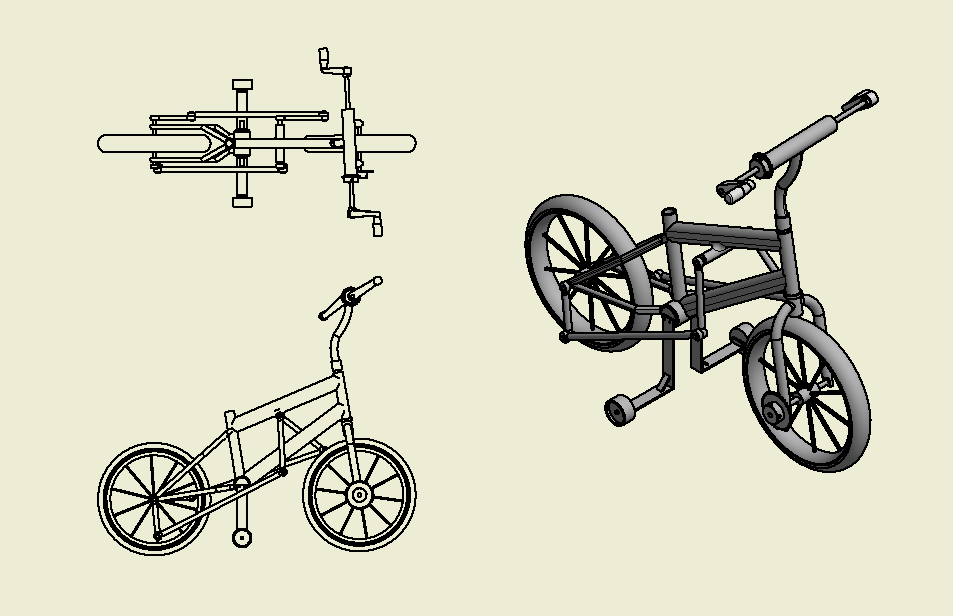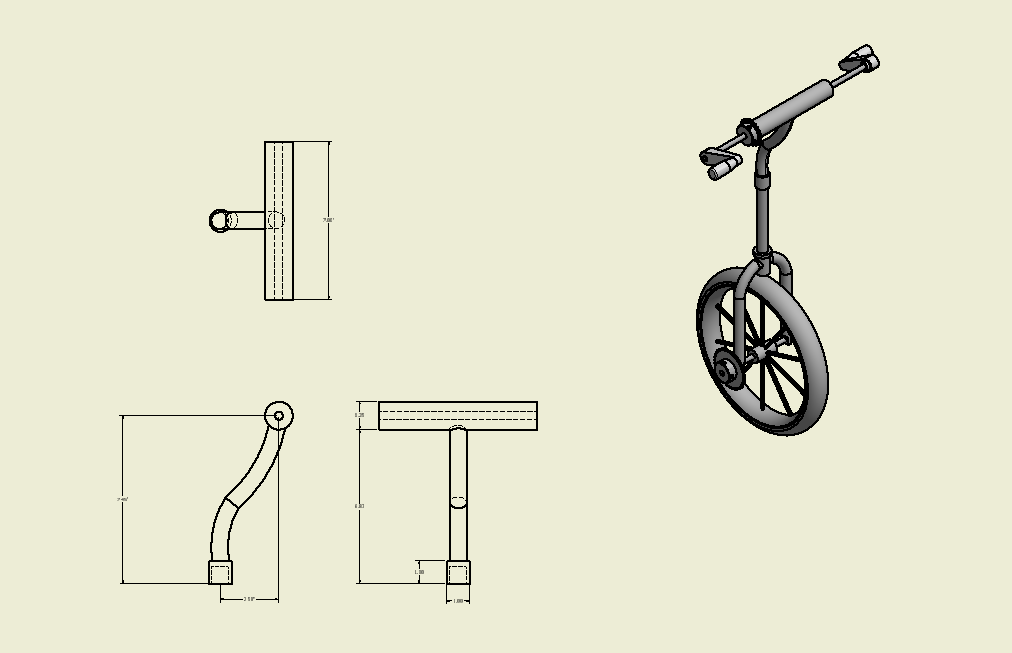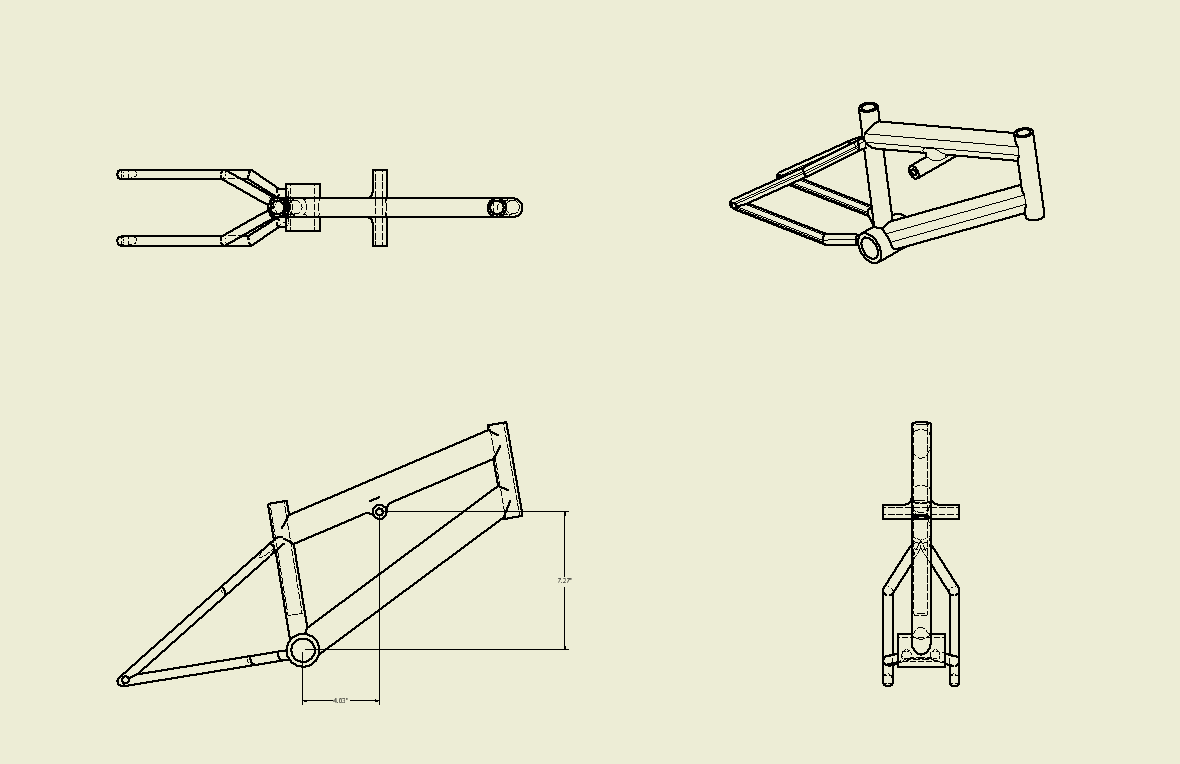Adapted bicycle
Contents |
Abstract
The child that we are helping has Spina Bifida, which is a birth defect that hinders the development of a baby's spinal cord. He has great upper body strength but very limited mobility in his legs. He is 2 years old and wants to be able to ride a trike with his older brother. The trike will have a hand crank on it, but the foot pedals will still be able to move in order to provide therapy for his condition. The goal is to make the trike so the child enjoys riding it along with getting practice moving his legs.
Team members
Austin Green
Matthew Harris
Nathan Tolleson
Jonathan Etson
Problem Statement/overview of the need
A child with Spina Bifida wants to be able to play outside with his brother by using a tricycle. The child has limited movement in his legs but excellent upper body strength so the trike would essentially be hand-powered. The pedals would still be included on the trike to provide therapy to the child’s leg movement.
Design Specifications
Child's weight 25 lbs.
Child's height 24.5 in.
He likes the colors green and blue and also likes the Incredible Hulk.
Background research
1. What exists already, similar products 2. availability 3. identify gaps in existing products or technology to be addressed
1.Similar designs to ours are made already by companies to address the riders limited, to no movement in the legs. Most of these designs are made for adults, but we are scaling our design down in order to accommodate for the child's dimensions.
2.These products were in the price range of $800-$900.
3.There are little to no gaps in the technology of this product and what we are needing to accomplish.
Conceptual Design
Summarize your conceptual design process. Develop at least three concepts.
Design Concept 1
- Design 1 is similar to a traditional bicycle. It has one wheel in the back, one wheel in the front, and training wheels placed under the seat out of the way of the 4 bar. This design uses hand cranks to drive the front wheel. There is also a four bar system that moves as the bicycle is traveling that has a foot rest on each system. This will be used to move his feet and provide therapy as he is riding.
Design Concept 2
Design 2 has one wheel in the back and two wheels in the front. Like all of our designs, it uses hand cranks to drive the front wheels. However, this design is based off of an existing child’s bike, so while hand cranks drive the front wheels a traditional pedal set up will drive the rear wheel. This will allow the pedals to coast while the child is turning the hand cranks. The front drive of this tricycle is driven with 2 chains and sprockets.
Design Concept 3
Design 3 is similar to design 2 except for the mechanics behind the front drive. Instead of using a chain and sprockets this design has a drive shaft with bevel gears to turn the front wheels. The drive shaft runs inside the front fork. This set up is much simpler than design 2 and will have less moving parts for the child to get his hands caught in.
Evaluate concepts/select candidate
Design one is a more traditional adaptive bicycle than our other designs. Designs 2 and 3 will be easier for the child to use, however they will not be as much of a work out to build lower body strength. All of the designs will be similar in weight, so that is negligible.
Detailed Design
Description of selected design
We selected Design concept 1. This design is the better replica of a traditional bicycle, which is what the family is wanting. We will purchase the bike frame and wheels while modifying the front of the bike to be able to be driven by a hand crank system. Because of the seat design, we will be adding two, four bar systems on either side of the bike for his feet to rest while also taking out the original pedal system of the bike. To avoid the four bar systems, we will modify the training wheels on the bike to go where the original pedals would be.
Analysis
GIM Analysis, Mobility Analysis, and Gear Ratio Analysis
Engineering analysis 1
GIM Analysis of 4 bar system
We applied two, 4 bar systems to either side of the bike with pedals attached to the 4 bar which will be where the child places his feet. We wanted to describe the motion of the 4 bar system.
Engineering analysis 2
Mobility Analysis
n = 3 f1 = 4 f2 = 0
m = 3(n-1) - 2(f1) - 1(f2)
m = 3(3-1) - 2(4) - 1(0)
m = 1
Engineering analysis 3
Gear Ratio Analysis
CAD Drawings
Bill of Materials
| Item | Description | Part Number | Price | Quantity | Supplier | Total |
|---|---|---|---|---|---|---|
| Bike | Huffy 12" Boys' Bike | 52888 | $44.00 | 1 | Walmart | $44.00 |
| Crank Handle | 3/8" hole diameter | 6473K76 | $17.22 | 2 | McMaster-Carr | $34.44 |
| Rotary Shaft | 3/8" hole diameter,24" long | 1346K12 | $15.44 | 1 | McMaster-Carr | $15.44 |
| Roller Chain Sprocket | 23 teeth,3/8" shaft diameter | 2737T152 | $14.42 | 1 | McMaster-Carr | $14.42 |
| Roller Chain Sprocket | 36 teeth,3/8" shaft diameter | 2737T261 | $22.71 | 1 | McMaster-Carr | $22.71 |
| Threaded Rod End Bolt | 3/8"-16 Shank Thread | 3798K48 | $6.78 | 12 | McMaster-Carr | $81.36 |
| Ball Bearing | 3/8" shaft diameter | 6384K348 | $10.90 | 2 | McMaster-Carr | $21.80 |
| 6061 Aluminum Round Tube | 0.065" Wall Thickness | 9056K76 | $13.08 | 1 | McMaster-Carr | $13.08 |
| Roller Chain | 1/4" pitch | 6261K171 | $5.14 per ft | 5 ft | McMaster-Carr | $25.70 |
Total: $272.95
Fabrication Process
Insert pictures of fabrication process
Testing and implementation
Describe testing, delivery, how used/received by the family The four bar and hand crank were rigorously tested by the team. The bike was designed for adjustability. The family received the bike well ,and they seemed pleased with the final product.
Photos of Completed design
Insert pictures of the final product
Instructions for safe use
Provide a clear summary of safe use for the family.
1.Do not use the device unless supervised by an adult that has been fully understood the safe use of this product.
2.Always make sure the seat belt and foot straps are securely connected before use.
3.Adjust the foot pedals accordingly before use.
4.Keep feet clear of the four bar system while using to avoid getting pinched by the moving parts.
5.Check and tighten any lose nuts or bolts before use.
6.Make sure the tires have the proper amount of air in them before use.
7.make sure the chain is properly attached before riding.
Project Summary, Reflection
Provide reflection on project outcomes here This was a very rewarding project that enabled us to use our skills in mechanism analysis to help a boy be able to gain more use in his legs and eventually be able to use his legs to full ability one day.
